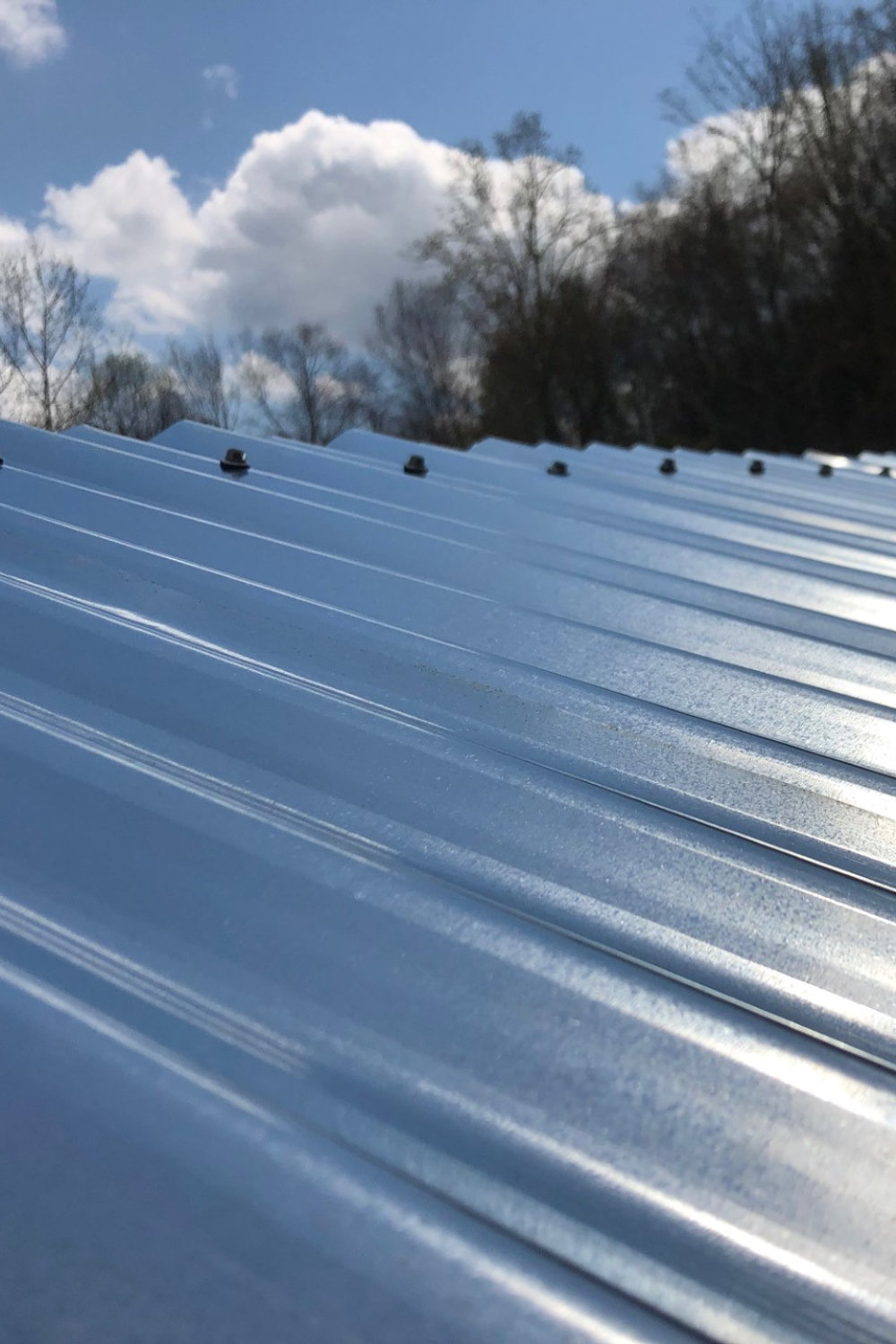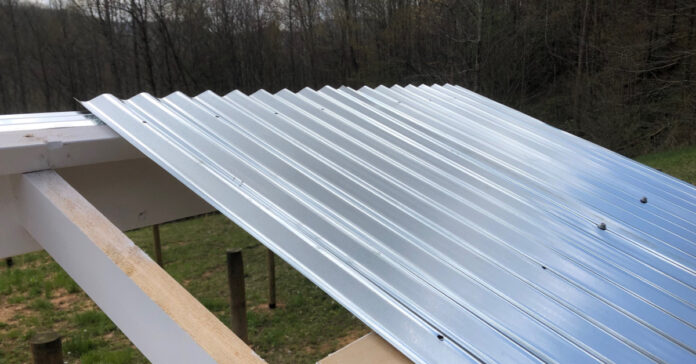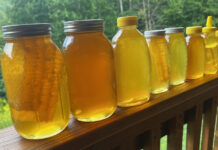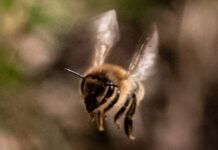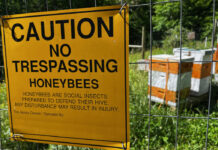Over the past couple of days, I finished caulking the chicken coop, I painted the rafters and fascia that will be exposed, and I finally put on the roof. The corrugated metal roof was much easier than dealing with asphalt shingles, and we wrapped it up in just a few hours.
I was surprised at how much cooler the coop was once the roof was erected. Not only does the metal provide shade, it reflects much of the light and heat out of the building.
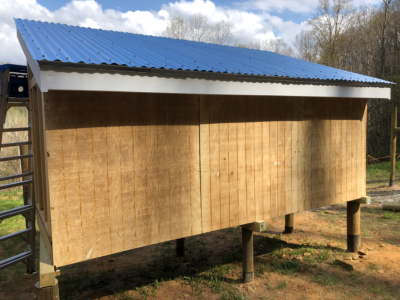
I also cut and fitted three of the eight exterior T1-11 wall panels that will make up the walls of the chicken coop. I still have to finish the other five. However, I paused that work because I need to buy or build the nesting boxes and door before I can complete the walls. I have to incorporate a hatch in the wall so we can get the eggs out or clean out the laying boxes without opening the coop.
Bee Equipment
I also finished painting my bee equipment, including the bottom boards and hive bodies. The painting took longer than I expected because I carefully brushed the corners to force paint into every nook and cranny.
After painting was done, I added foundation to the frames I had assembled over the weekend. Once I developed my technique, it went quickly. I decided to assemble 10 more frames so that all my hive bodies are full. (Now we just need some bees.) Then I went over each of my commercial frames and added staples and nails at strategic locations. The frames weren’t as strong as they should be.
I am done building hive bodies and frames for now. Eventually, I will move on to the supers, which are medium boxes.
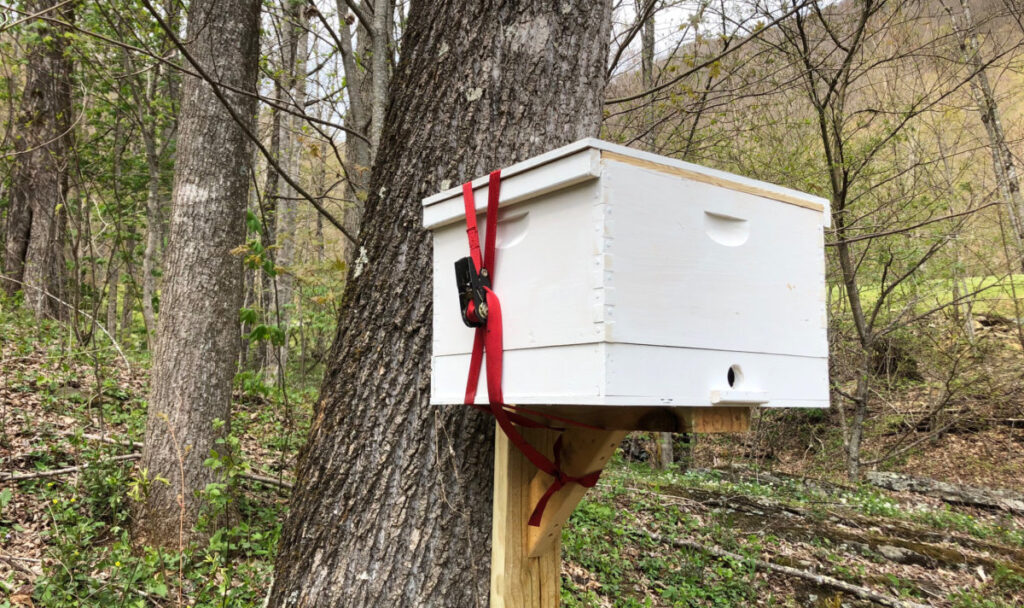
Swarm Trap
I finished my projects by assembling the swarm trap and posting it in a tree. I do not know if there are any natural bees or other beekeepers in the area who might lose swarms, but I added a couple sprays of swarm commander to attract scout bees, just in case.
Old comb is supposed to entice a swarm to settle in a swarm trap, but I don’t have any. Instead, I used black foundation that is double-coated in bees wax. They small good to me, so I hope they will smell good to a scout bee.
I copied the swarm trap stand shown at the 2:30 mark in this video by Kamon Reynolds, one of my favorite YouTube beekeepers. My version isn’t identical to his, but it’s close enough.
But will it Catch Bees?
I can’t predict if my swarm trap will catch bees, because I do not know if there are wild bees in the woods around here. There are no beekeepers within at least a couple miles, so I won’t be catching any of their escaped swarms. One old timer told me “A guy down the road used to raise bees.” Vague, especially since given his age, “used to” could mean fifteen years ago.
A friend of mine who is a beekeeper much closer to sea level doesn’t think my swarm trap be successful because he doesn’t think bees can survive in the wild out here, given our weather. I don’t agree. I figure I will never know unless I try it. Besides, I have seen a few honey bees in some of the local flowers, so there are bees within flying distance. Will they swarm? Who knows? If they do, will they like my new swarm, trap? Again, who knows?
But I’ve done what I can to tilt the odds in my favor. I’ve sized the box and the entrance appropriately, and I’ve put it in a location on the edge of a wooded area with water nearby. There is a straight shot out the entrance, giving them plenty of room to take off. I even added a little landing board. And I spritzed a few shots of Swarm Commander inside. Now all I have to do is cross my fingers and wait.
I may be waiting a few seasons, but its like fishing: You won’t catch anything unless you put your hook in the water.
